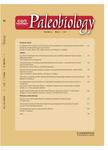版权所有:内蒙古大学图书馆 技术提供:维普资讯• 智图
内蒙古自治区呼和浩特市赛罕区大学西街235号 邮编: 010021

作者机构:Univ Cincinnati Dept Geol Cincinnati OH 45221 USA Univ Florida Florida Museum Nat Hist Gainesville FL 32611 USA Univ Alaska Museum Dept Geol & Geophys Fairbanks AK 99775 USA Smithsonian Inst Natl Museum Nat Hist Dept Paleobiol Washington DC 20013 USA Smithsonian Inst Natl Museum Nat Hist ETE Program Washington DC 20013 USA George Washington Univ Dept Anthropol Ctr Adv Study Hominid Paleobiol Hominid Paleobiol Doctoral Program Washington DC 20052 USA Kenya Wildlife Serv Ecosyst Conservat & Management Dept Nairobi 00100 Kenya Univ Texas Austin Dept Anthropol Austin TX 78712 USA
出 版 物:《PALEOBIOLOGY》 (古生物学)
年 卷 期:2014年第40卷第4期
页 面:560-583页
核心收录:
学科分类:0710[理学-生物学] 070903[理学-古生物学与地层学(含:古人类学)] 0709[理学-地质学] 07[理学] 0713[理学-生态学]
基 金:National Museums of Kenya National Geographic Society [1508, 4339-90, 7525-03, 8784-10] Smithsonian Institution National Museum of Natural History for sustained support of the Evolution of Terrestrial Ecosystems Program Division Of Earth Sciences Directorate For Geosciences Funding Source: National Science Foundation Division Of Environmental Biology Direct For Biological Sciences Funding Source: National Science Foundation
主 题:Mammals Ecosystems Body size Animal communities Species diversity Fossils Marine ecology
摘 要:Comparisons between modern death assemblages and their source communities have demonstrated fidelity to species diversity across a variety of environments and taxonomic groups. However, differential species preservation and collection (including body-size bias) in both modern and fossil death assemblages may still skew the representation of other important ecological characteristics. Here, we move beyond live-dead taxonomic fidelity and focus on the recovery of functional ecology (how species interact with their ecosystem) at the community level for a diverse non-volant mammal community (87 species;Amboseli, Kenya). We use published literature to characterize species, using four functional traits and their associated categorical attributes (i) dietary mode (11 attributes;e.g., browser, grazer), (ii) preferred feeding habitat (16 attributes;e.g., grassland, woodland), (iii) preferred sheltering habitat (17 attributes;e.g., grassland, underground cavity), and (iv) activity time (7 attributes;e.g., diurnal, nocturnal, nocturnally dominated crepuscular). For each functional ecological trait we compare the death assemblage s recovered richness and abundance structure of constituent functional attributes with those of the source community, using Jaccard similarity, Spearman s rho, and the Probability of Interspecific Encounter (evenness). We use Monte Carlo simulations to evaluate whether these empirical comparisons are significantly different from expectations calculated from randomized sampling of species from the source community. Results indicate that although the Amboseli death assemblage is significantly overrepresented by large-bodied species relative to the Amboseli source community, it captures many functional dimensions of the ecosystem within expectations of a randomized collection of species. Additional resampling simulations and logistic regressions further illustrate that the size bias inherent to the Amboseli death assemblage is not a major driver of deviat